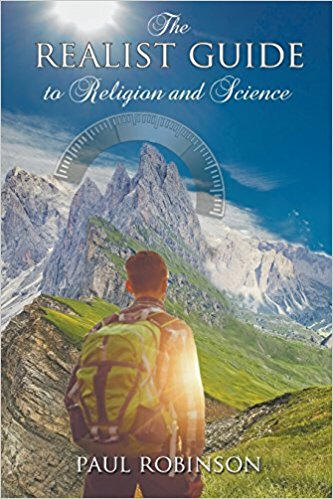Book Review
The Realist Guide to Religion and Science
Paul Robinson
Gracewing (15 Jan 2018)
ISBN:
978-0852449226
 What a
wonderful book for those of us who have always believed that there is no
conflict between authentic science and religion. Before ordination, the
author received a Masters degree in engineering, mathematics and computer
science and since then he teaches Thomistic philosophy and theology: it
shows.
What a
wonderful book for those of us who have always believed that there is no
conflict between authentic science and religion. Before ordination, the
author received a Masters degree in engineering, mathematics and computer
science and since then he teaches Thomistic philosophy and theology: it
shows.
Fr Robinson reminds us that we need a framework in order to begin to answer the big questions: how do we know things in the first place, for example. In order to provide answers to these questions, both religion and science need to be in the realist tradition. If not, there is only incoherence. I think here of Stephen Hawking trying to convince us that the answer to the question how do we get something from nothing lies in the magic word "gravity". But as the infant asks immediately: what gives rise to gravity?
If there is such a thing as blind science, there is also such a thing as blind faith. Can we bring someone to religious faith by compulsion? Of course not. Acts of faith must be by means of the intellect, the free intellect. The act of faith is above reason, not in contradiction to it. Compare this sublime Thomistic approach to that of Luther who said that reason is only given to us by God to humble and, no doubt, confuse us. By learning to distrust reason, we begin to believe by blind faith. What a terrible religion. A god who makes mockery of reason is not the God we worship.
Science teaches us that the universe began with a burst of energy we refer to as the Big Bang. The universe, space and time had a beginning. The atheist scientist refuses to accept the reasonable premise that a beginning must be brought about by a creator who has no beginning. Instead, they fall into incoherence and babble on about spontaneous generation or, as with Hawking, gravity. The rejection of realism leads them to incoherence.
The consistent atheist would have to accept that his atheism is ultimately an act of faith. The author quotes Peter Atkins, in many ways a greater "Theophobic" than Dawkins, as saying that his atheistic "faith" enables him to make sense of everything. Everything? The nature of love? The belief that the person next to me cannot be reduced to a chemical formula?
One might almost imagine the atheistic husband demanding scientific
evidence of his wife's love for him.
The author makes use of a device
he calls an "epistedometer" to demonstrate his arguments throughout the
work, a method I found very helpful. This is a superb response to so much
confusion we find in science. And in religion.
Reviewed by Dr Pravin Thevathasan
